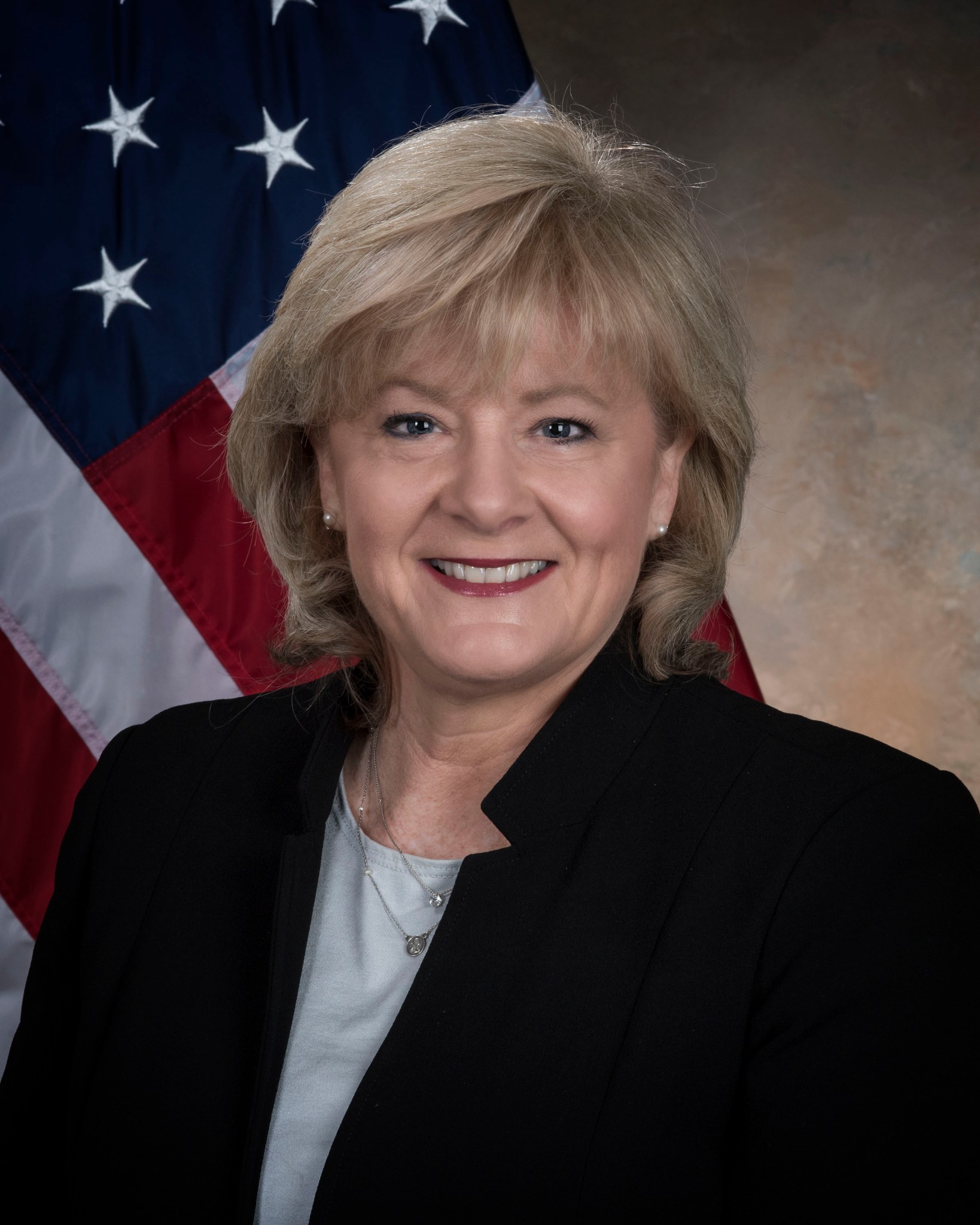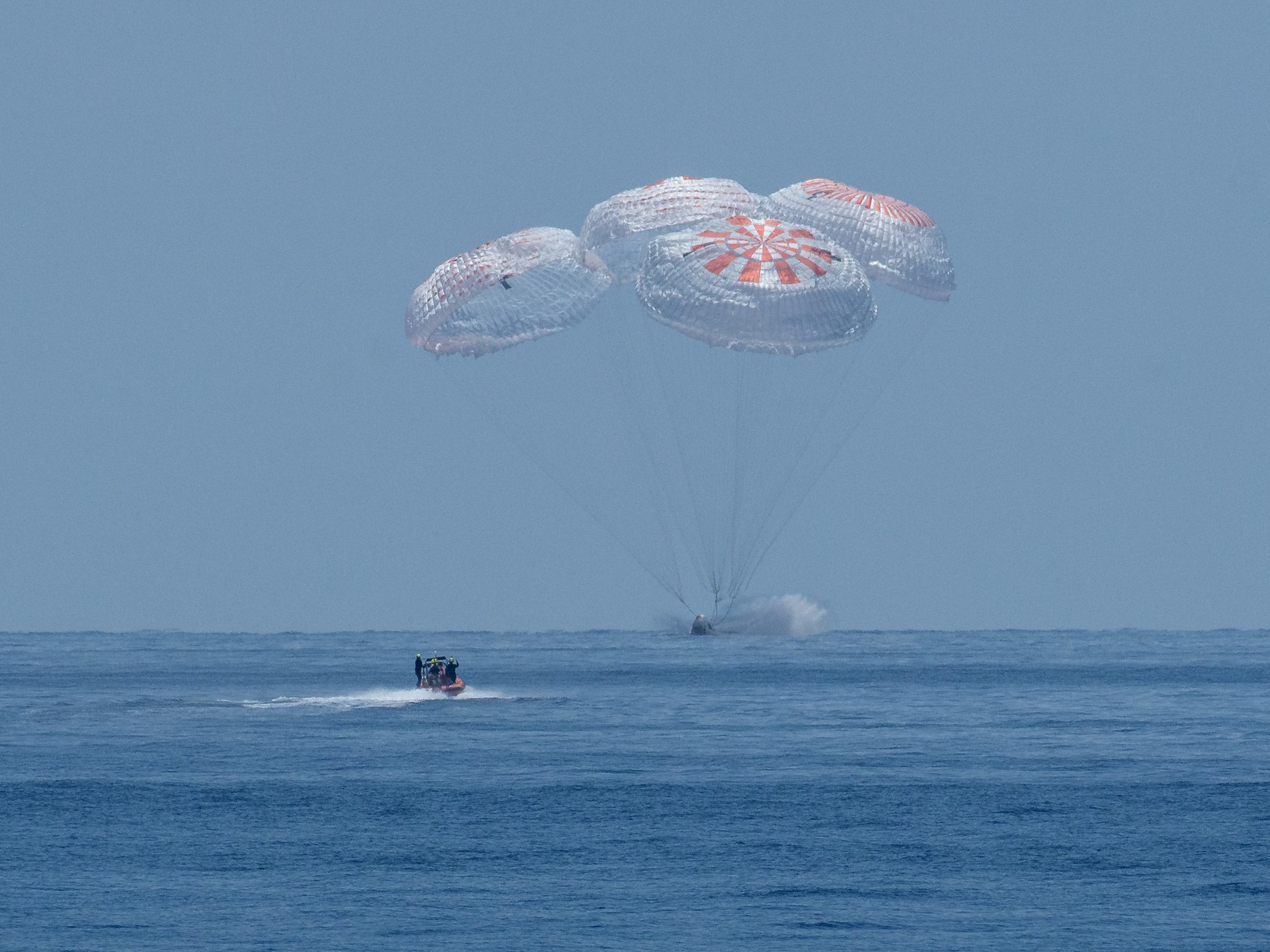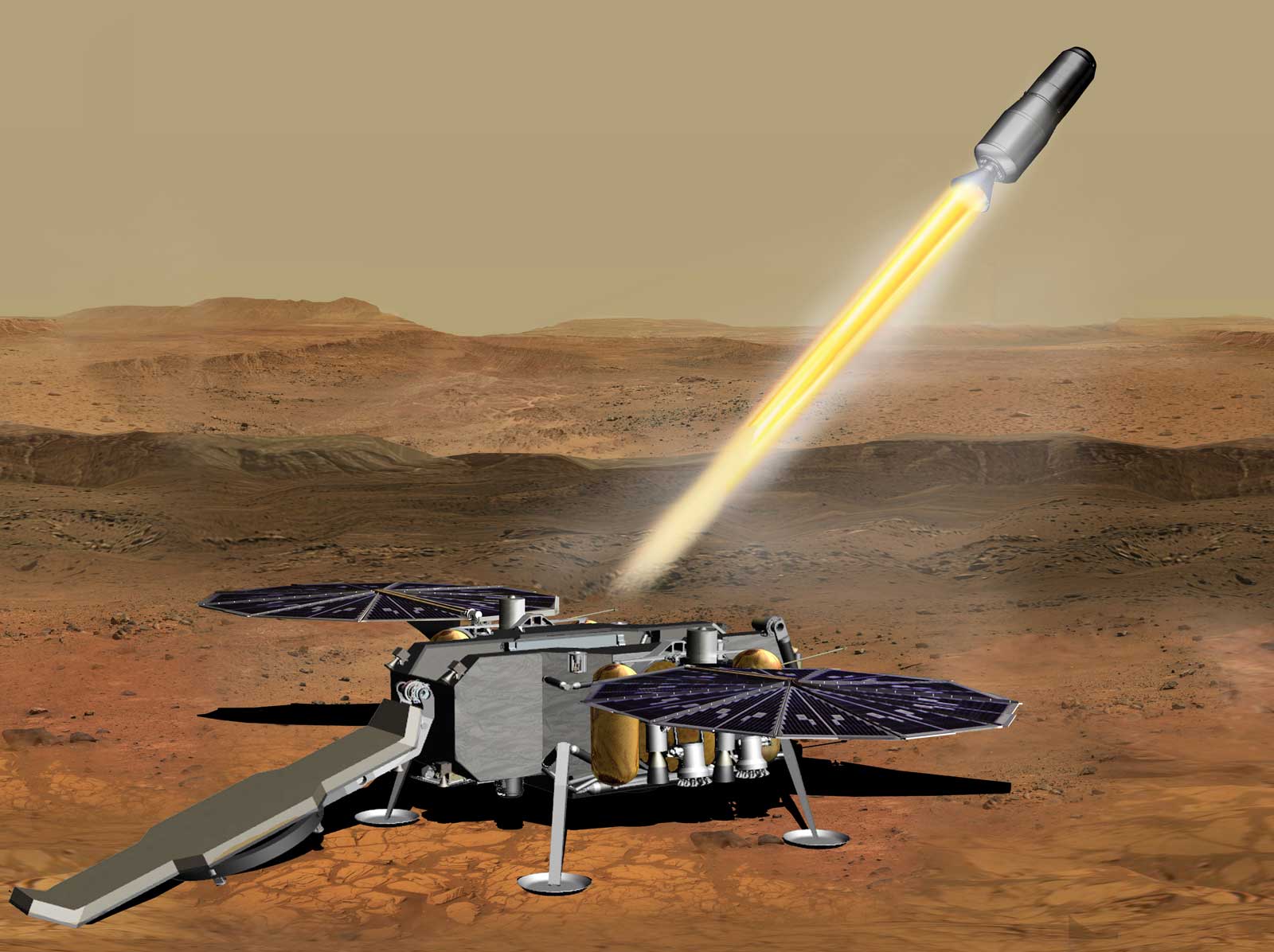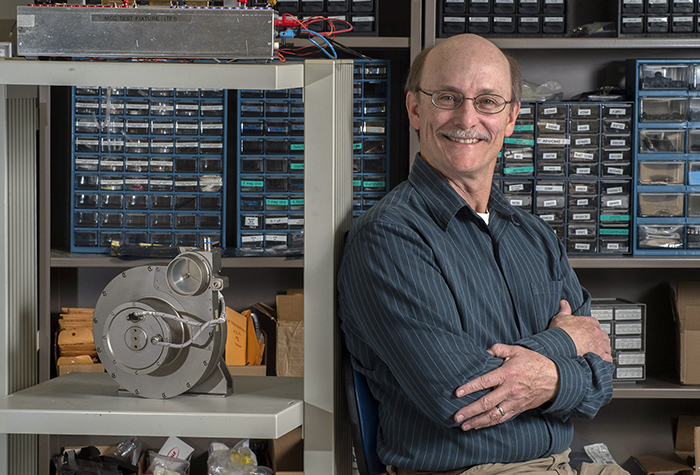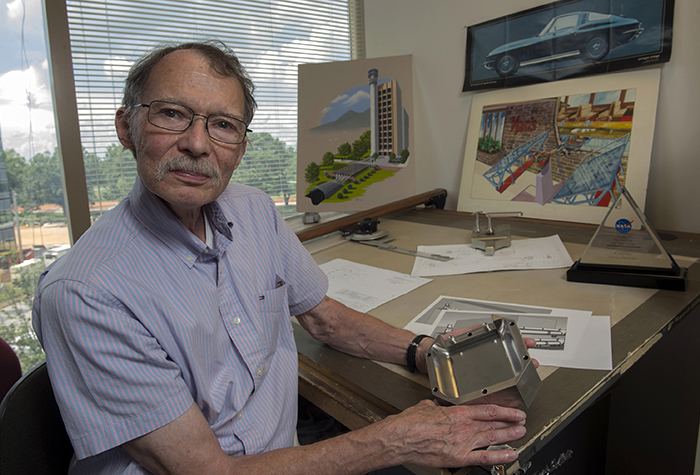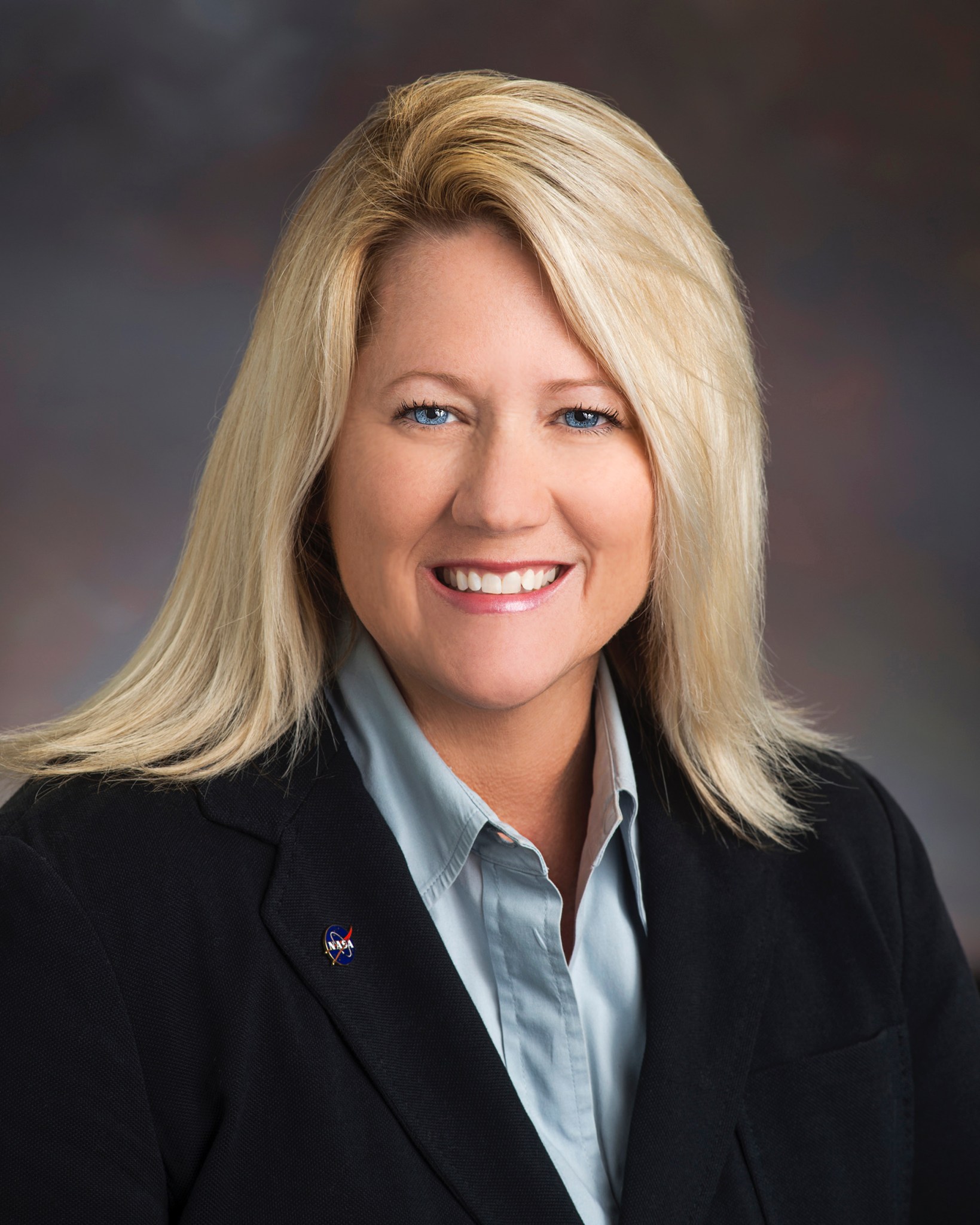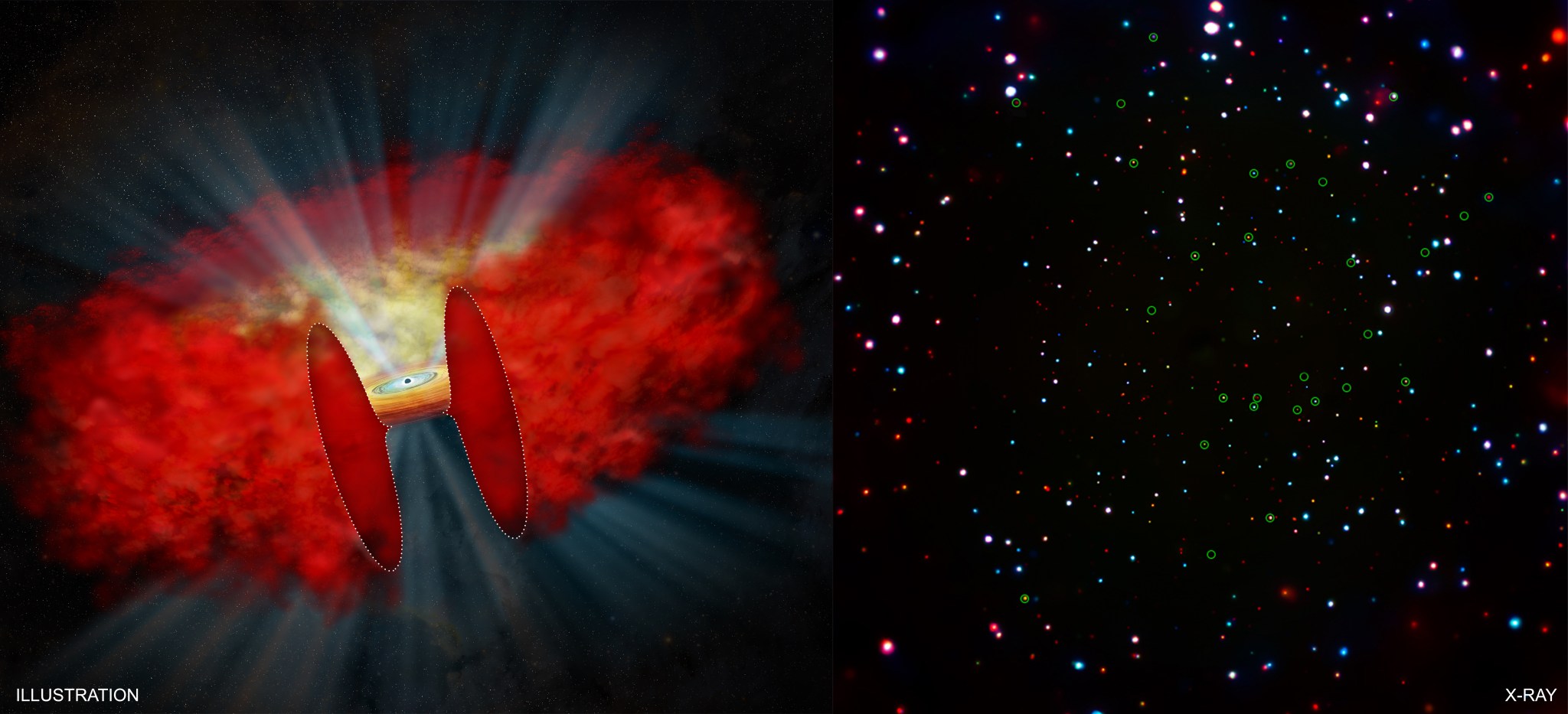In This Week’s Star
- Marshall Transitions to COVID-19 Stage 3; Mandatory Telework Still in Effect
- Dragon Named ‘Endeavor’ Safely Lands with NASA Astronauts Aboard
- Mars 2020 Perseverance Rover Spacecraft Lifts Off, Beginning Journey to Jezero Crater
- NASA Barge Arrives at Kennedy with Launch Vehicle Stage Adapter for Artemis I
- Two Marshall Inventors Inducted into NASA’s Inventors Hall of Fame
- Deborah Tomek Appointed NASA’s Senior Advisor for On-Orbit Servicing, Assembly, and Manufacturing
- Chandra Helps Discover Cases of Black Hole Mistaken Identity
- This Week in NASA History: MESSENGER Launches – August 3, 2004
Marshall Transitions to COVID-19 Stage 3; Mandatory Telework Still in Effect
In light of a sustained downward trend in documented new cases of COVID-19 across Madison County and surrounding counties, Jody Singer, director of NASA’s Marshall Space Flight Center, announced July 31 that Marshall has transitioned from Stage 4 to Stage 3 of the NASA Framework for Return to On-Site Work, effective Aug. 3.
At Stage 3, Marshall remains in mandatory telework status, with site access restricted to those individuals permitted on-site for approved mission-critical and mission-essential work. Center leadership approval is required for all on-site work. Employees will be notified by their supervisors if they’re approved to return to duty on-site. Until that time, all team members able to work from home will continue to do so.
All current on-site employees, and those who may be cleared to return in the weeks and months ahead, must follow Safe at Work Protocol Guidelines – wearing protective masks or face coverings, frequent cleaning and washing hands, and practicing the same socially conscious health and safety measures at work that they would follow at home or in the community.
Singer and other Marshall leaders will record a virtual town hall Aug. 10 to discuss the transition and take team members’ questions. Team members are encouraged to submit questions here until noon Aug. 10.
Center leadership continues to prioritize safety and health in all its decision-making, Singer said. Her team consulted with NASA leadership and other appropriate officials before making the call to go to Stage 3.
“Transitioning to Stage 3 allows us to continue making progress on our mission and still protect workforce health and safety,” she told workers July 31 by email. “Now that we better understand how to mitigate the risk of coronavirus transmission, we are confident we can conduct limited work on-site with the precautions we have put in place.”
Mandatory telework is expected to continue into the fall, Singer confirmed. “While working from home presents its own unique challenges, many of us are able to effectively perform our jobs and keep the NASA mission moving forward from home,” she said.
Increasing on-site work will be a gradual process. Thorough reviews of all facilities, work areas, and processes are conducted before on-site work is approved to ensure all available protective measures can be implemented effectively. Those measures include providing ample supplies of, and access to, personal protective equipment and hand sanitizer, and reconfiguring work flows and work areas to minimize physical interaction between team members.
Singer said she would remain diligent about keeping the workforce informed as Marshall, the community, and the nation continue to face the challenges of the global pandemic.
“Since the onset of this pandemic, the health and safety of the Marshall team has been our top priority,” she said. “The dedication you have shown to ensuring our mission continues during the pandemic has been remarkable. You have endured, adapted, and demonstrated tremendous agility throughout – and I know you will continue to excel.”
For more information about Marshall’s current status and the latest updates on COVID-19 as they impact the NASA workforce, visit Inside Marshall or NASA People.
Dragon Named ‘Endeavor’ Safely Lands with NASA Astronauts Aboard
After 64 days, 1,024 orbits around Earth, and 27,147,284 miles, the dragon named “Endeavor” safely landed its pioneering astronauts back on their home planet.
Splashdown of NASA’s Demonstration-2 mission, flown aboard a Crew Dragon capsule belonging to SpaceX of Hawthorne, California, occurred at 1:48 p.m. Aug. 2 in the Gulf of Mexico, off the coast of Pensacola, Florida. Spacecraft commander Douglas Hurley and Robert Behnken exited the capsule a little over an hour later.
The mission marked the first time a commercially built and operated American crewed spacecraft returned from the International Space Station. The mission was designed to complete a test flight program that marks a new era in human spaceflight.
“Welcome home, Bob and Doug! Congratulations to the NASA and SpaceX teams for the incredible work to make this test flight possible,” NASA Administrator Jim Bridenstine said. “It’s a testament to what we can accomplish when we work together to do something once thought impossible. Partners are key to how we go farther than ever before and take the next steps on daring missions to the Moon and Mars.”
Behnken and Hurley’s return was the first splashdown for American astronauts since Thomas Stafford, Vance Brand, and Donald “Deke” Slayton landed in the Pacific Ocean off the coast of Hawaii on July 24, 1975, at the end of the Apollo-Soyuz Test Project.
The Demo-2 test flight launched May 30 from NASA’s Kennedy Space Center. After reaching orbit, Behnken and Hurley named their Crew Dragon spacecraft “Endeavour” as a tribute to the first space shuttle each astronaut flew aboard. Nearly 19 hours later, Crew Dragon docked to the forward port of the International Space Station’s Harmony module May 31.
The Demo-2 test flight is part of NASA’s Commercial Crew Program, which worked with the U.S. aerospace industry to launch astronauts on American rockets and spacecraft from American soil to the space station for the first time since 2011. Team members from NASA’s Marshall Space Flight Center supported development of Crew Dragon and SpaceX’s Falcon 9 rocket that propelled the astronauts into orbit.
“This entire DM-2 mission has been an incredible accomplishment,” said Marshall’s Steve Gaddis, launch vehicle deputy manager for the Commercial Crew Program. “It’s taken many people and many years to get here.”
Working with SpaceX, the Marshall team improved the safety and reliability of the Merlin engines, stage propulsion, Draco and SuperDraco thrusters, life support system, the abort and flight termination systems, structures, materials and processes, fracture control, and integrated performance analyses.
“I don’t believe there is a key system the Marshall team did not made a contribution to,” Gaddis said.
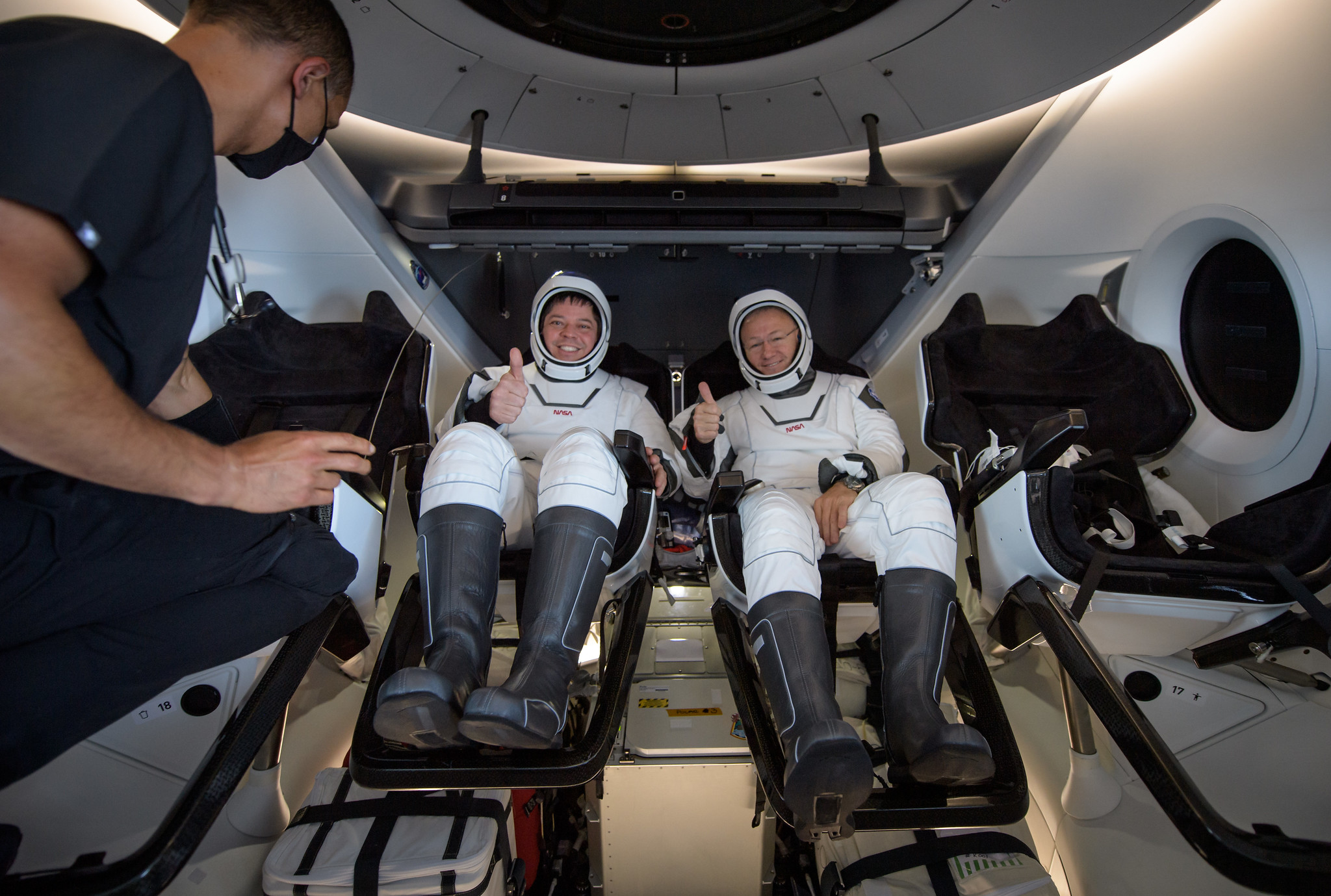
Behnken and Hurley participated in a number of scientific experiments, spacewalks, and public engagement events during their 62 days aboard station.
The astronauts contributed more than 100 hours to the orbiting laboratory’s science investigations. Hurley conducted the Droplet Formation Study inside of the Microgravity Science Glovebox, which evaluates water droplet formation and water flow. Hurley also conducted the Capillary Structures investigation, which studies the use of different structures and containers to manage fluids and gases.
Hurley and Behnken worked on numerous sample switch outs for the Electrolysis Measurement experiment, which looks at bubbles created using electrolysis and has implications for numerous electrochemical reactions and devices. Both crew members also contributed images to the Crew Earth Observations study, which helps record how Earth is changing over time, from human-caused changes – such as urban growth and reservoir construction – to natural dynamic events, including hurricanes, floods, and volcanic eruptions.
Marshall manages science operations on the U.S. segment of the orbiting outpost.
“The launch and complete mission of this commercial space system designed for humans is a demonstration of technical excellence,” said Bobby Watkins, director of the Human Exploration Development & Operations Office at Marshall. “This is a significant step on NASA’s journey to expand human exploration to the Moon and Mars.”
Behnken conducted four spacewalks with Expedition 63 Commander and NASA colleague Chris Cassidy. The duo upgraded two power channels on the far starboard side of the station’s truss with new lithium-ion batteries. They also routed power and Ethernet cables, removed H-fixtures that were used for ground processing of the solar arrays prior to their launch, installed a protective storage unit for robotic operations, and removed shields and coverings in preparation for the arrival later this year of the Nanoracks commercial airlock on a SpaceX cargo delivery mission.
Demo-2 was SpaceX’s final test flight and is providing data on the performance of the Falcon 9 rocket, Crew Dragon, and ground systems, as well as in-orbit, docking, splashdown, and recovery operations.
Crew Dragon Endeavour will return to SpaceX’s Dragon Lair in Florida for inspection and processing. Teams will examine the spacecraft’s data and performance from throughout the test flight. The completion of Demo-2 and the review of the mission and spacecraft pave the way for NASA to certify SpaceX’s crew transportation system for regular flights carrying astronauts to and from the space station. SpaceX is readying the hardware for the first rotational mission, called Crew-1, later this year. This mission would occur after NASA certification, which is expected to take about six weeks.
Mars 2020 Perseverance Rover Spacecraft Lifts Off, Beginning Journey to Jezero Crater
NASA’s Mars 2020 Perseverance rover mission is on its way to the Red Planet to search for signs of ancient life and collect samples to send back to Earth.
Humanity’s most sophisticated rover was lifted to space July 30 aboard a United Launch Alliance Atlas V rocket, which took off from Cape Canaveral Air Force Station in Florida. Mars 2020 sent its first signal to ground controllers via NASA’s Deep Space Network shortly after leaving Earth orbit, and navigation data indicated the craft is perfectly on course to Mars.
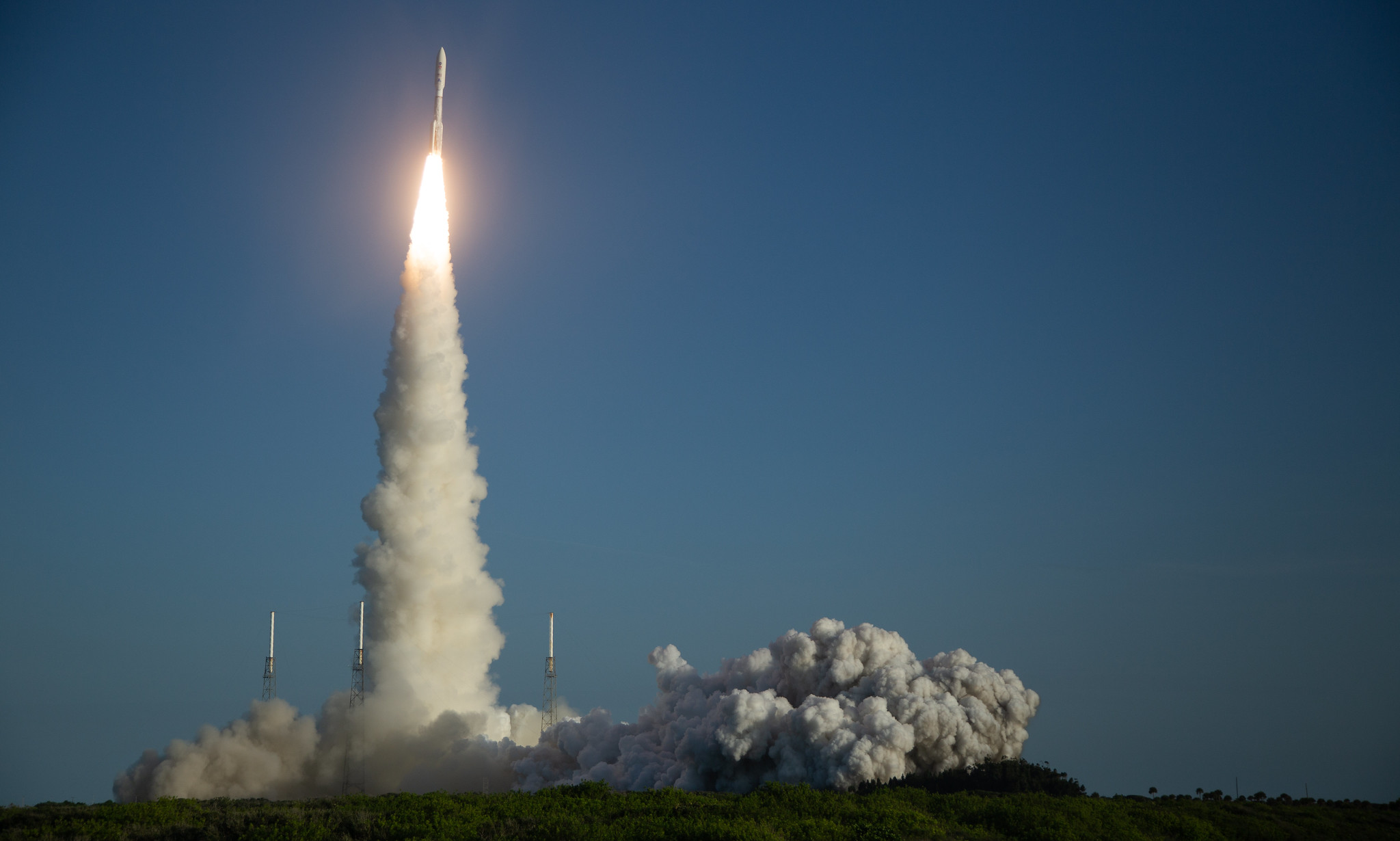
“With the launch of Perseverance, we begin another historic mission of exploration,” NASA Administrator Jim Bridenstine said. “This amazing explorer’s journey has already required the very best from all of us to get it to launch through these challenging times. As a mission, as an agency, and as a country, we will persevere.”
The Perseverance rover’s primary mission is to seek out signs of past microscopic life on Mars, explore the diverse geology of its landing site, Jezero Crater, and demonstrate technologies that will pave the way for future robotic and human exploration.
“Jezero Crater is the perfect place to search for signs of ancient life,” said Thomas Zurbuchen, associate administrator for NASA’s Science Mission Directorate. “Perseverance is going to make discoveries that cause us to rethink our questions about what Mars was like and how we understand it today.”
Caleb Fassett, a planetary scientist at NASA’s Marshall Space Flight Center who was instrumental in helping NASA identify Jezero as the optimal landing site for Mars 2020, also was thrilled by the smooth launch, which he watched at home with his children.
“Geologically speaking, the habitable environment that existed inside Jezero could be roughly 3 or 4 billion years old,” Fassett said. “We don’t have access to many rocks on Earth from that era. So these studies could be really illuminating about the potential development of life on Mars and other planetary bodies in the early solar system.”
Engineers at Marshall are developing the Mars Ascent Vehicle, the rocket that will launch Perseverance’s samples, collected via its sophisticated Sample Caching System. Once in space, the vehicle will rendezvous with a European Space Agency spacecraft for return to Earth, where scientists around the world can conduct in-depth analysis, using equipment far too large to send to the Red Planet.
“Marshall is proud to be a part of this trailblazing endeavor,” Marshall Director Jody Singer said. “Exploring Mars with rovers and robotic tools is essential to sending humans there one day. I can’t wait to see all of the groundbreaking science and discovery from this mission.”
While most of Perseverance’s seven instruments are geared toward learning more about the planet’s geology and astrobiology, it’s the job of the Mars Oxygen In-Situ Resource Utilization Experiment instrument, or MOXIE, to consider all the missions yet to come. Designed to demonstrate that converting Martian carbon dioxide into oxygen is possible, MOXIE could lead to future breakthroughs in generating breathable air for explorers and oxygen for rocket fuel.
Also looking to the future is the Ingenuity Mars Helicopter, a technology demonstrator which carries no science instruments and will stay nestled against Perseverance’s belly during the flight to Mars and the mission’s first 60 or so days on the surface. When it emerges, however, Ingenuity will spend roughly one Earth month pursuing up to five powered, controlled test flights.
Aerial data acquired during these flights will help the next generation of Mars helicopters add “overwatch” capabilities to Mars exploration – scouting for rovers and human crews from high overhead – or possibly transporting small payloads and investigating difficult-to-reach destinations.
In the meantime, the Mars 2020 spacecraft faces roughly seven cold, dark months of interplanetary space travel to reach its destination – a fact never far from the minds of its project team.
“There is still a lot of road between us and Mars – about 290 million miles of them,” said John McNamee, Mars 2020 Perseverance project manager at NASA’s Jet Propulsion Laboratory. “But if there was ever a team that could make it happen, it is this one. We are going to Jezero Crater. We will see you there Feb. 18, 2021.”
Mars 2020 is part of America’s larger Moon to Mars endeavor, which includes long-duration lunar missions that will prepare human explorers to visit the Red Planet for the first time. NASA’s Artemis program will send the first woman and next man to the Moon by 2024 and establish a sustained human presence on and around the Moon by 2028.
The Jet Propulsion Laboratory built Perseverance and will manage its operations. NASA’s Launch Services Program at Kennedy Space Center was responsible for launch management.
NASA Barge Arrives at Kennedy with Launch Vehicle Stage Adapter for Artemis I
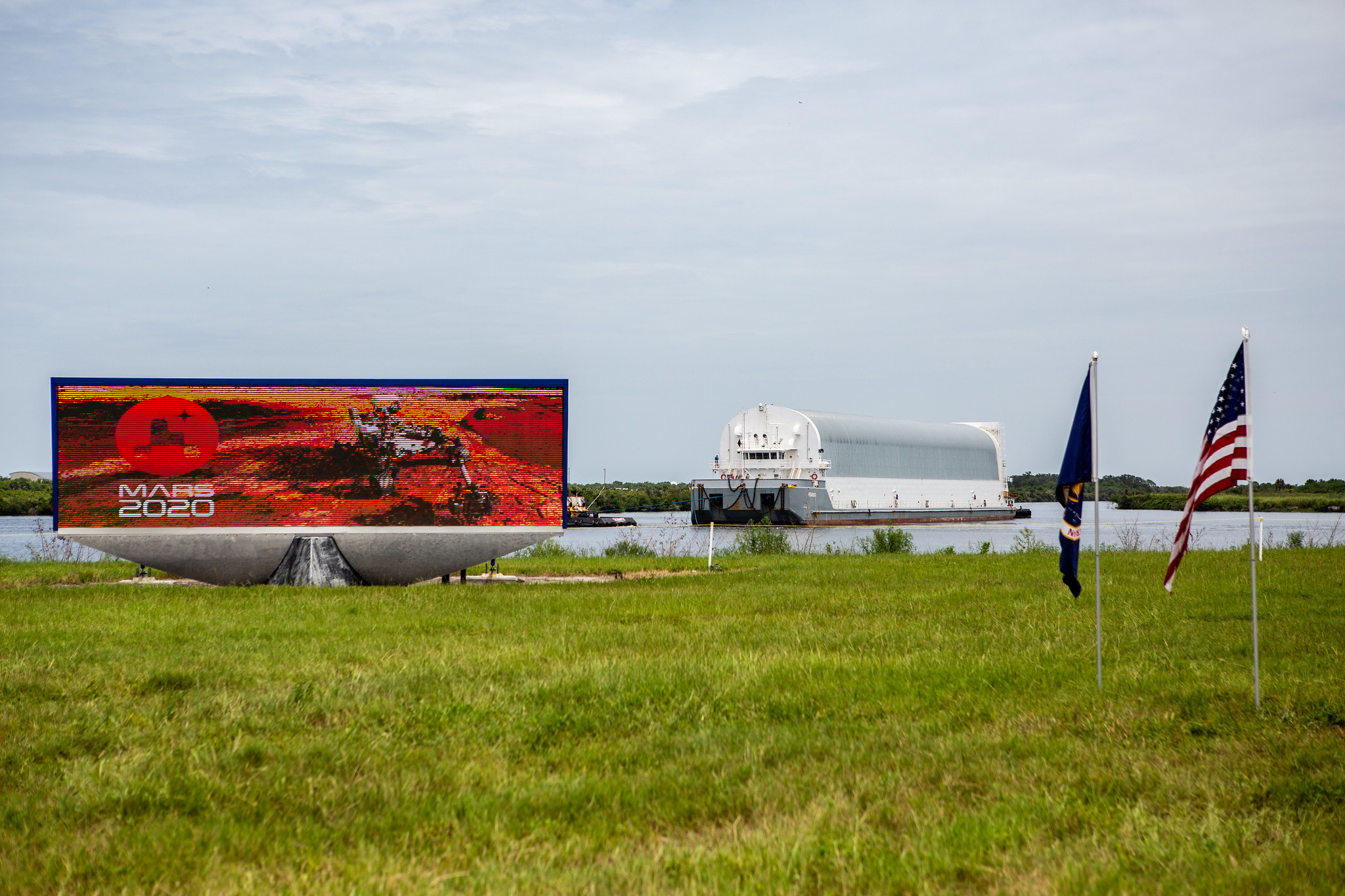
NASA’s Pegasus barge, carrying the second-to-last piece of hardware for the Artemis I test flight around the Moon, arrives at NASA’s Kennedy Space Center on July 29. The launch vehicle stage adapter, which connects the core stage to the upper stage of NASA’s Space Launch System rocket, was produced at NASA’s Marshall Space Flight Center by Teledyne Brown Engineering in Huntsville. The barge arrived at Kennedy during the agency’s pre-launch briefing for NASA’s Mars Perseverance rover. Technicians with NASA’s Exploration Ground Systems at Kennedy moved the launch vehicle stage adapter from the barge to Kennedy’s Vehicle Assembly Building shortly before the Atlas V rocket carrying Perseverance launched in the early morning hours July 30. The launch vehicle stage adapter will remain in the Vehicle Assembly Building until it’s time for stacking on the mobile launcher ahead of the Artemis I launch. Pegasus will ferry the core stage – the final piece of SLS rocket hardware – to Kennedy following the completion of the Green Run test series at NASA’s Stennis Space Center. (NASA/Isaac Watson)
Two Marshall Inventors Inducted into NASA’s Inventors Hall of Fame
By Will Bryan
Baseball has Cooperstown, New York. American football has Canton, Ohio. In those cities, the sports enshrine their greatest in their respective hall of fame.
NASA’s top inventors now have their own digital temple of achievement: the agency’s online Inventors Hall of Fame. Among the inaugural 2020 inductees are David Howard and William “Neill” Myers of NASA’s Marshall Space Flight Center. The hall of fame is managed by NASA’s Technology Transfer Program in the agency’s Space Technology Mission Directorate.
Howard joined Marshall in 1980 and holds 20 U.S. patents. He retired from civil service in 2014 and went to work for Jacobs Technology of Tullahoma, Tennessee, on a Marshall contract. He has spent his career designing, developing, building, and testing signal conditioning and electronic control systems that play a critical role in NASA’s human and robotic missions. Signal conditioning is an important step between a sensor collecting data – in the form of signals, such as temperature or movement – and an instrument analyzing the signal. It prepares, or conditions, the signal to be interpreted by the instruments. Electronic control systems ensure that the systems they are supporting operate as designed.
Howard’s work supports the gamut of Marshall-led missions and hardware. Astronauts on the International Space Station use his handiwork every day with the Urine Processing Assembly in the space station’s Environmental Control and Life Support System. The Water Delivery Controller, which is onboard the space station and is used as needed, and the Long Duration Sorbent Test Bed experiment, which has been returned to Earth, additionally used his work. Astronauts also take advantage of his expertise when they use the Life Sciences Glovebox experiment station on the orbiting outpost.
Multiple satellites, including NASA’s Lightning Imaging Sensor – a satellite which records and relays lightning in thunderstorms – have also benefited from Howard’s knowledge and dedication.
“I was fortunate enough to have the opportunity to work on many programs through the years that were short enough duration in time to see them from inception all the way to flight,” Howard said. “The inventions were a byproduct of that work.”
While Howard focused on the electronic aspect of missions, fellow hall inductee Myers’ work revolved around the mechanical facets. Myers – who worked for NASA for 53 years before retiring and moving to industry earlier this year – developed many important devices for NASA and the world.
Favoring simple and elegant, yet creative, solutions, he used his mechanical engineering prowess to design and develop spacecraft and propulsion technologies, including the 60K Fastrac rocket engine – one of the first rocket engines to have the combustion chamber and engine nozzle fabricated as a single piece. He also designed a simulator to test thrust vector control actuators, and in recent years, he designed new actuators for steering solid rocket boosters.
Myers’ skills have led to many important spinoffs. He helped design a knee brace that uses propulsion technology to provide its users stability while recovering from injuries. The design team was recognized at a White House celebration of the Americans with Disabilities Act in 1997.
His 27 patents are the most of any individual in the history of Marshall. The one that stands out most in his mind is the Variable-Aperture Reciprocating Reed Valve, which was designed for the fluid damper project.
“Originally designed to mitigate dangerous oscillations in a launch vehicle during flight, the fluid damper has been adapted to stabilize tall structures against high winds and earthquakes,” Myers said. He and the team were awarded Marshall’s Invention of the Year in 2017 for the device, which is currently installed on multiple buildings in prominent cities, including New York.
Myers has also won Marshall’s Inventor of the Year Award four times during his storied career.
NASA’s Inventors Hall of Fame was created to recognize current and past NASA engineers, scientists, and innovators who, through the creation and patenting of machines and devices, enabled NASA’s portfolio of history-making missions while improving life on Earth.
Bryan, an ASRC Federal/Analytical Services employee, supports the Office of Strategic Analysis & Communications.
Deborah Tomek Appointed NASA’s Senior Advisor for On-Orbit Servicing, Assembly, and Manufacturing
Deborah M. Tomek has been appointed to the Senior Executive Service position of NASA’s senior advisor for On-Orbit Servicing, Assembly, and Manufacturing. She will work to advance the goals laid out in the OSAM National Initiative Strategy, led cooperatively by teams from Langley Research Center, Marshall Space Flight Center, and Goddard Space Flight Center.
The Senior Executive Service is the personnel system covering most of the top managerial positions in federal agencies.
Tomek’s assignment directly supports the Space Technology Mission Directorate and requires extensive collaboration with stakeholders across NASA, as well as the Department of Defense, academia, industry, and other government agencies. She also will provide NASA with executive leadership and strategic direction in developing agency partnerships to rapidly mature technology to advance OSAM initiatives across NASA and the nation.
Marshall’s Jeramie Broadway will support Tomek as the center’s OSAM point of contact. Broadway is a formulation manager in Marshall’s Partnerships and Formulation Office within the Science and Technology Office. He has been actively engaged with OSAM efforts, and his background in materials and processes and experience in Marshall’s Chief Engineer’s Office align directly to the expertise that the center brings to the OSAM initiative.
Tomek has more than 22 years of research and technical management experience at NASA and Lockheed Martin Corp. She was most recently the deputy director and acting director of Langley’s Space Technology and Exploration Directorate, roles in which she continued to oversee the formulation of the OSAM National Initiative responsible for fostering agency collaborations.
Tomek holds a bachelor’s degree in aerospace engineering from Auburn University and a master’s degree in aeronautical and mechanical engineering from George Washington University.
Chandra Helps Discover Cases of Black Hole Mistaken Identity
A team of researchers has identified a group of black holes that had previously been mistaken for a different kind of black hole. This discovery has important implications for understanding how supermassive black holes grow and evolve over billions of years.
The misjudged black holes were found in the Chandra Deep Field-South, the deepest X-ray image ever taken. The main panel of the accompanying graphic shows the Chandra Deep Field-South, which contains over 7 million seconds of observing time, collected over many years by the Chandra X-ray Observatory. In this image, red, green, and blue represent the low, medium, and high-energy X-rays that Chandra can detect. Most of the points in this image are a black hole.
This latest work combines X-rays from Chandra in the Chandra Deep Field-South with large amounts of data at different wavelengths from other observatories, including NASA’s Hubble Space Telescope and NASA’s Spitzer Space Telescope. The team looked at black holes located 5 billion light-years or more away from Earth in this patch of sky. At these distances, scientists had already found 67 heavily obscured, growing black holes with both X-ray and infrared data in the Chandra Deep Field-South. In this latest study, the authors identified another 28, highlighted by circles in a labeled version of the image. Optical and infrared images for four of these 28 are shown in a separate graphic.
These 28 supermassive black holes were previously categorized differently – either as slowly growing black holes with low density or nonexistent cocoons, or as distant galaxies. Supermassive black holes grow by pulling in surrounding material, which is heated and produces radiation at a wide range of wavelengths, including X-rays. Many astronomers think this growth includes a phase, which happened billions of years ago, when a dense cocoon of dust and gas covers most black holes. These cocoons of material, which are the fuel source that enables the black hole to grow and generate radiation, are depicted in the illustration in the inset. The cocoon (red) surrounds a disk of material falling onto the black hole, plus a wind of material (blue) blowing away from the disk. A portion of the cocoon is cut out to show the heavily obscured black hole.
These results are important for theoretical models estimating the number of black holes in the universe and their growth rates, including those with different amounts of obscuration. Scientists design these models to explain a uniform glow in X-rays across the sky called the “X-ray background,” first discovered in the 1960s. Individual growing black holes observed in images like the Chandra Deep Field-South account for most of the X-ray background.
A paper reporting the results of this study is being published in The Astrophysical Journal and a copy is available online.
NASA’s Marshall Space Flight Center manages the Chandra program. The Smithsonian Astrophysical Observatory’s Chandra X-ray Center controls science and flight operations from Cambridge and Burlington, Massachusetts. Read more about Chandra here, and find more images, multimedia, and related materials here.
This Week in NASA History: MESSENGER Launches – August 3, 2004
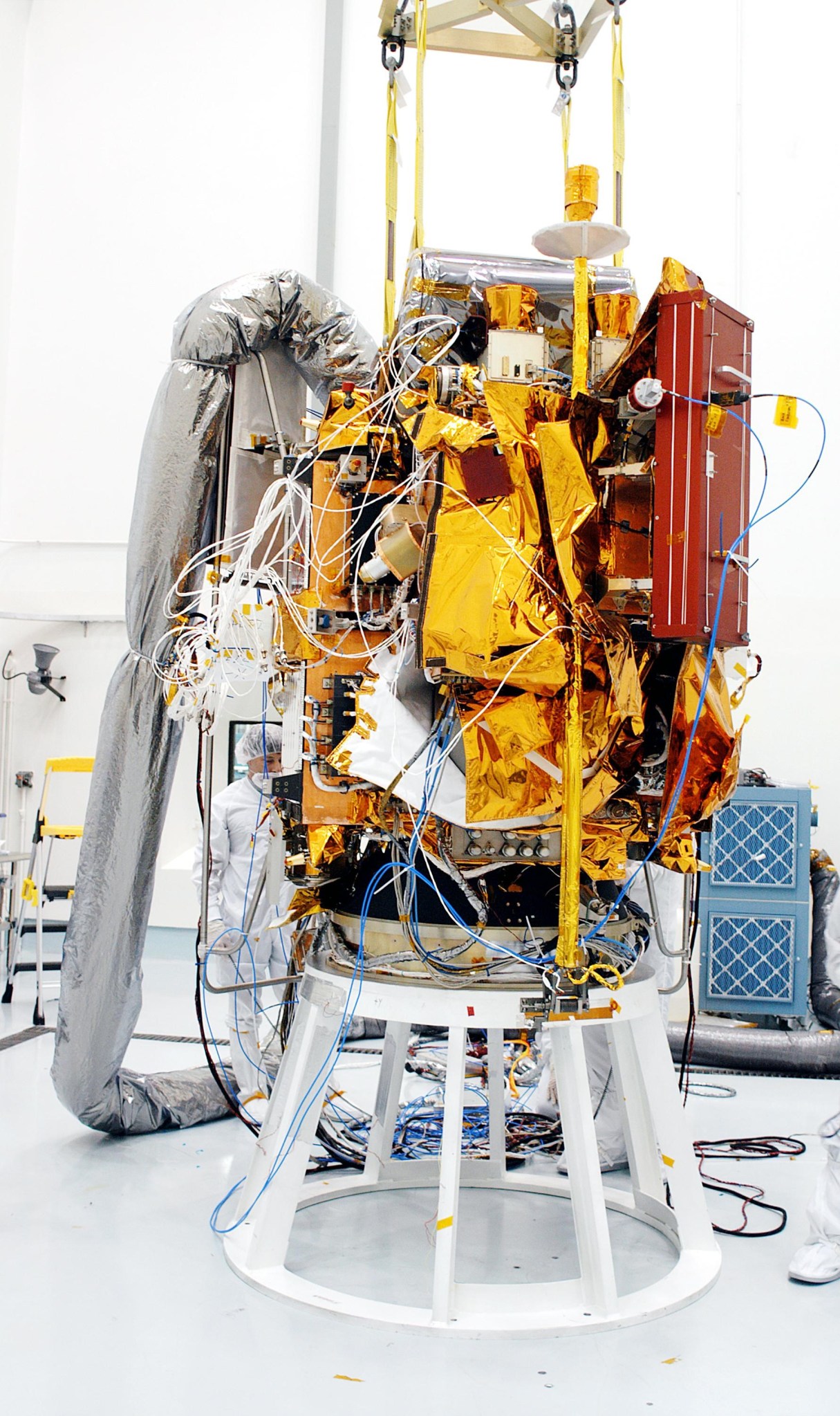
This week in 2004, the MErcury Surface, Space ENvironment, Geochemistry, and Ranging spacecraft was launched aboard a Delta II rocket from Cape Canaveral Air Force Station in Florida. Designed and built by the Johns Hopkins University Applied Physics Laboratory in Laurel, Maryland, MESSENGER was the first spacecraft to orbit Mercury. Protected from the intense heat of the Sun by an innovative ceramic-cloth sunshade, MESSENGER provided the first images of the entire planet and collected information on the composition and structure of Mercury’s crust, geologic history, atmosphere, magnetosphere, and the makeup of its core and polar materials. The spacecraft arrived at Mercury on March 17, 2011, and impacted the planet’s surface April 30, 2015. MESSENGER was part of the Discovery program, managed at NASA’s Marshall Space Flight Center for the agency’s Science Mission Directorate. The NASA History Program is responsible for generating, disseminating, and preserving NASA’s remarkable history and providing a comprehensive understanding of the institutional, cultural, social, political, economic, technological, and scientific aspects of NASA’s activities in aeronautics and space. For more pictures like this one and to connect to NASA’s history, visit the Marshall History Program’s webpage. (NASA)
























